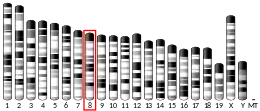| ATP6V1B2 | |||||||||||||||||||||||||||||||||||||||||||||||||||
|---|---|---|---|---|---|---|---|---|---|---|---|---|---|---|---|---|---|---|---|---|---|---|---|---|---|---|---|---|---|---|---|---|---|---|---|---|---|---|---|---|---|---|---|---|---|---|---|---|---|---|---|
| Identifiers | |||||||||||||||||||||||||||||||||||||||||||||||||||
| Aliases | ATP6V1B2, ATP6B1B2, ATP6B2, HO57, VATB, VPP3, Vma2, ATPase H+ transporting V1 subunit B2, DOOD, ZLS2 | ||||||||||||||||||||||||||||||||||||||||||||||||||
| External IDs | OMIM: 606939 MGI: 109618 HomoloGene: 1279 GeneCards: ATP6V1B2 | ||||||||||||||||||||||||||||||||||||||||||||||||||
| |||||||||||||||||||||||||||||||||||||||||||||||||||
| |||||||||||||||||||||||||||||||||||||||||||||||||||
| |||||||||||||||||||||||||||||||||||||||||||||||||||
| |||||||||||||||||||||||||||||||||||||||||||||||||||
| |||||||||||||||||||||||||||||||||||||||||||||||||||
| Wikidata | |||||||||||||||||||||||||||||||||||||||||||||||||||
| |||||||||||||||||||||||||||||||||||||||||||||||||||
V-type proton ATPase subunit B, brain isoform is an enzyme that in humans is encoded by the ATP6V1B2 gene.[5][6][7]
This gene encodes a component of vacuolar ATPase (V-ATPase), a multisubunit enzyme that mediates acidification of eukaryotic intracellular organelles. V-ATPase dependent organelle acidification is necessary for such intracellular processes as protein sorting, zymogen activation, receptor-mediated endocytosis, and synaptic vesicle proton gradient generation. V-ATPase is composed of a cytosolic V1 domain and a transmembrane V0 domain. The V1 domain consists of three A, three B, and two G subunits, as well as a C, D, E, F, and H subunit. The V1 domain contains the ATP catalytic site. The protein encoded by this gene is one of two V1 domain B subunit isoforms and is the only B isoform highly expressed in osteoclasts.[7]
In melanocytic cells ATP6V1B2 gene expression may be regulated by MITF.[8]
References
- 1 2 3 GRCh38: Ensembl release 89: ENSG00000147416 - Ensembl, May 2017
- 1 2 3 GRCm38: Ensembl release 89: ENSMUSG00000006273 - Ensembl, May 2017
- ↑ "Human PubMed Reference:". National Center for Biotechnology Information, U.S. National Library of Medicine.
- ↑ "Mouse PubMed Reference:". National Center for Biotechnology Information, U.S. National Library of Medicine.
- ↑ Bernasconi P, Rausch T, Struve I, Morgan L, Taiz L (Nov 1990). "An mRNA from human brain encodes an isoform of the B subunit of the vacuolar H(+)-ATPase". J Biol Chem. 265 (29): 17428–31. doi:10.1016/S0021-9258(18)38179-1. PMID 2145275.
- ↑ Smith AN, Lovering RC, Futai M, Takeda J, Brown D, Karet FE (Oct 2003). "Revised nomenclature for mammalian vacuolar-type H+ -ATPase subunit genes". Mol Cell. 12 (4): 801–3. doi:10.1016/S1097-2765(03)00397-6. PMID 14580332.
- 1 2 "Entrez Gene: ATP6V1B2 ATPase, H+ transporting, lysosomal 56/58kDa, V1 subunit B2".
- ↑ Hoek KS, Schlegel NC, Eichhoff OM, et al. (2008). "Novel MITF targets identified using a two-step DNA microarray strategy". Pigment Cell Melanoma Res. 21 (6): 665–76. doi:10.1111/j.1755-148X.2008.00505.x. PMID 19067971. S2CID 24698373.
External links
- Human ATP6V1B2 genome location and ATP6V1B2 gene details page in the UCSC Genome Browser.
Further reading
- Finbow ME, Harrison MA (1997). "The vacuolar H+-ATPase: a universal proton pump of eukaryotes". Biochem. J. 324 (3): 697–712. doi:10.1042/bj3240697. PMC 1218484. PMID 9210392.
- Stevens TH, Forgac M (1998). "Structure, function and regulation of the vacuolar (H+)-ATPase". Annu. Rev. Cell Dev. Biol. 13: 779–808. doi:10.1146/annurev.cellbio.13.1.779. PMID 9442887.
- Nelson N, Harvey WR (1999). "Vacuolar and plasma membrane proton-adenosinetriphosphatases". Physiol. Rev. 79 (2): 361–85. doi:10.1152/physrev.1999.79.2.361. PMID 10221984. S2CID 1477911.
- Forgac M (1999). "Structure and properties of the vacuolar (H+)-ATPases". J. Biol. Chem. 274 (19): 12951–4. doi:10.1074/jbc.274.19.12951. PMID 10224039.
- Kane PM (1999). "Introduction: V-ATPases 1992-1998". J. Bioenerg. Biomembr. 31 (1): 3–5. doi:10.1023/A:1001884227654. PMID 10340843.
- Wieczorek H, Brown D, Grinstein S, et al. (1999). "Animal plasma membrane energization by proton-motive V-ATPases". BioEssays. 21 (8): 637–48. doi:10.1002/(SICI)1521-1878(199908)21:8<637::AID-BIES3>3.0.CO;2-W. PMID 10440860. S2CID 23505139.
- Nishi T, Forgac M (2002). "The vacuolar (H+)-ATPases--nature's most versatile proton pumps". Nat. Rev. Mol. Cell Biol. 3 (2): 94–103. doi:10.1038/nrm729. PMID 11836511. S2CID 21122465.
- Kawasaki-Nishi S, Nishi T, Forgac M (2003). "Proton translocation driven by ATP hydrolysis in V-ATPases". FEBS Lett. 545 (1): 76–85. doi:10.1016/S0014-5793(03)00396-X. PMID 12788495. S2CID 10507213.
- Morel N (2004). "Neurotransmitter release: the dark side of the vacuolar-H+ATPase". Biol. Cell. 95 (7): 453–7. doi:10.1016/S0248-4900(03)00075-3. PMID 14597263. S2CID 17519696.
- Nelson RD, Guo XL, Masood K, et al. (1992). "Selectively amplified expression of an isoform of the vacuolar H(+)-ATPase 56-kilodalton subunit in renal intercalated cells". Proc. Natl. Acad. Sci. U.S.A. 89 (8): 3541–5. Bibcode:1992PNAS...89.3541N. doi:10.1073/pnas.89.8.3541. PMC 48904. PMID 1373501.
- Lee BS, Underhill DM, Crane MK, Gluck SL (1995). "Transcriptional regulation of the vacuolar H(+)-ATPase B2 subunit gene in differentiating THP-1 cells". J. Biol. Chem. 270 (13): 7320–9. doi:10.1074/jbc.270.13.7320. PMID 7706273.
- van Hille B, Richener H, Schmid P, et al. (1994). "Heterogeneity of vacuolar H(+)-ATPase: differential expression of two human subunit B isoforms". Biochem. J. 303 (1): 191–8. doi:10.1042/bj3030191. PMC 1137575. PMID 7945239.




